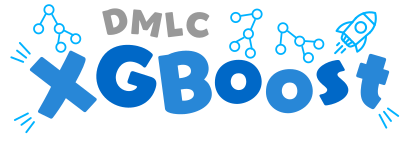dask-memusage
If you're using Dask with tasks that use a lot of memory, RAM is your bottleneck for parallelism. That means you want to know how much memory each task uses:
- So you can set the highest parallelism level (process or threads) for each machine, given available to RAM.
- In order to know where to focus memory optimization efforts.
dask-memusage is an MIT-licensed statistical memory profiler for Dask's Distributed scheduler that can help you with both these problems.
dask-memusage polls your processes for memory usage and records the minimum and maximum usage for each task in the Dask execution graph in a CSV:
task_key,min_memory_mb,max_memory_mb
"('from_sequence-map-sum-part-e15703211a549e75b11c63e0054b53e5', 0)",44.84765625,96.98046875
"('from_sequence-map-sum-part-e15703211a549e75b11c63e0054b53e5', 1)",47.015625,97.015625
"('sum-part-e15703211a549e75b11c63e0054b53e5', 0)",0,0
"('sum-part-e15703211a549e75b11c63e0054b53e5', 1)",0,0
sum-aggregate-apply-no_allocate-4c30eb545d4c778f0320d973d9fc8ea6,0,0
apply-no_allocate-4c30eb545d4c778f0320d973d9fc8ea6,47.265625,47.265625
task_key,min_memory_mb,max_memory_mb
"('from_sequence-map-sum-part-e15703211a549e75b11c63e0054b53e5', 0)",44.84765625,96.98046875
"('from_sequence-map-sum-part-e15703211a549e75b11c63e0054b53e5', 1)",47.015625,97.015625
"('sum-part-e15703211a549e75b11c63e0054b53e5', 0)",0,0
"('sum-part-e15703211a549e75b11c63e0054b53e5', 1)",0,0
sum-aggregate-apply-no_allocate-4c30eb545d4c778f0320d973d9fc8ea6,0,0
apply-no_allocate-4c30eb545d4c778f0320d973d9fc8ea6,47.265625,47.265625
You may also find the Fil memory profiler useful in tracking down which specific parts of your code are responsible for peak memory allocations.
Example
Here's a working standalone program using dask-memusage; notice you just need to add two lines of code:
from time import sleep
import numpy as np
from dask.bag import from_sequence
from dask import compute
from dask.distributed import Client, LocalCluster
from dask_memusage import install # <-- IMPORT
def allocate_50mb(x):
"""Allocate 50MB of RAM."""
sleep(1)
arr = np.ones((50, 1024, 1024), dtype=np.uint8)
sleep(1)
return x * 2
def no_allocate(y):
"""Don't allocate any memory."""
return y * 2
def make_bag():
"""Create a bag."""
return from_sequence(
[1, 2], npartitions=2
).map(allocate_50mb).sum().apply(no_allocate)
def main():
cluster = LocalCluster(n_workers=2, threads_per_worker=1,
memory_limit=None)
install(cluster.scheduler, "memusage.csv") # <-- INSTALL
client = Client(cluster)
compute(make_bag())
if __name__ == '__main__':
main()
Usage
Important: Make sure your workers only have a single thread! Otherwise the results will be wrong.
Installation
On the machine where you are running the Distributed scheduler, run:
$ pip install dask_memusage
Or if you're using Conda:
$ conda install -c conda-forge dask-memusage
API usage
# Add to your Scheduler object, which is e.g. your LocalCluster's scheduler
# attribute:
from dask_memoryusage import install
install(scheduler, "/tmp/memusage.csv")
CLI usage
$ dask-scheduler --preload dask_memusage --memusage.csv /tmp/memusage.csv
Limitations
- Again, make sure you only have one thread per worker process.
- This is statistical profiling, running every 10ms. Tasks that take less than that won't have accurate information.
Help
Need help? File a ticket at https://github.com/itamarst/dask-memusage/issues/new









